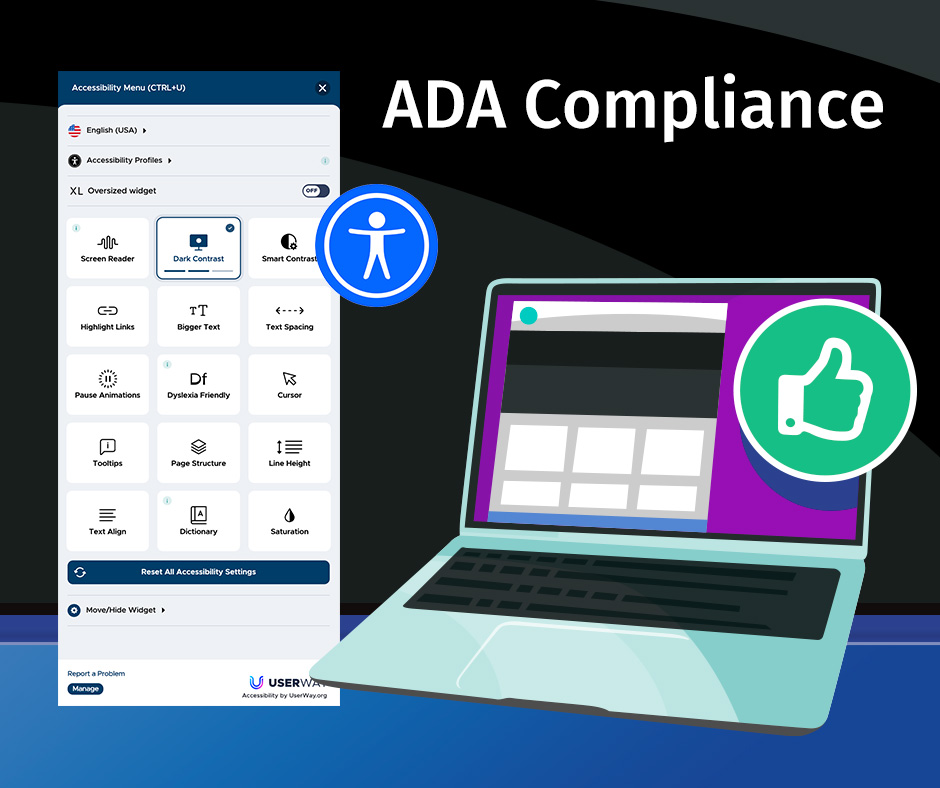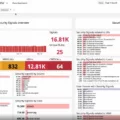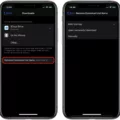Are you looking for software to help make your website compliant with the Americans with Disabilities Act (ADA)? ADA compliance is a critical requirement that all websites must meet in order to ensure they are accessible to people with disabilities. Fortunately, there are a number of software solutions available to help you achieve this goal.
In this blog post, we’ll discuss what ADA compliance software is and how it can help make your website more accessible. We’ll also cover some of the features you should look for when choosing an ADA compliance solution and provide some tips on ways you can use it to improve your website’s accessibility.
What is ADA Compliance Software?
ADA compliance software helps websites become compliant with the Americans with Disabilities Act (ADA). This includes ensuring that all images have alternate text, that videos have captions, and that all pages are navigable using only a keyboard. It also involves making sure that web elements such as buttons, links, forms, and other user interface elements are designed in a manner that allows people with disabilities to interact with them easily.
There are a variety of different types of ADA compliance software solutions available today. These include automated accessibility testing tools, content management systems (CMS) plugins and development frameworks like HTML5 Boilerplate or Bootstrap. Some solutions even offer additional features such as color contrast checks or automated fixes to common accessibility issues.
Features of ADA Compliance Software
When selecting an ADA compliance solution for your website, there are several key features you should look for:
• Automated Accessibility Checks – Automated accessibility checks will scan your website and alert you to any potential areas where it doesn’t meet the requirements set by the Americans with Disabilities Act (ADA). This can save you time by eliminating manual checks which can be time-consuming and tedious.
• Color Contrast Checks – Many people with vision impairments rely on the color contrast between text and background colors in order to read content on webpages easily. An effective ADA compliance solution should include automatic color contrast checking capabilities so you don’t have to manually check every page of your website yourself.
• Automated Fixes – Some solutions offer automated fixes for areas where your site doesn’t meet the requirements set by the Americans with Disabilities Act (ADA). This can save you time by eliminating manual fixes which can be time-consuming and tedious.
• Content Management System Plugins – If your website uses a Content Management System (CMS), look for an ADA compliance plugin that integrates directly into it so that all changes made in one place will propagate automatically throughout all pages of your site without having to manually update each page individually.
How To Use Your ADA Compliance Software
Once you have selected an appropriate solution for your website, there are several steps you can take to make sure it is properly implemented:
• Conduct regular automated accessibility tests – Run automated tests on a regular basis to ensure all new updates and changes comply with standards set by the Americans with Disabilities Act (ADA).
• Monitor analytics data – Monitor metrics such as bounce rate or engagement rate across various device categories (desktop vs mobile) so you can spot any potential issues quickly before they become problems
• Take user feedback into account – Get feedback from users who use assistive technologies such as screen readers or voice recognition software so they can provide insight into how they experience your site
using an appropriate ADA compliance solution is essential when it comes to ensuring that everyone has equal access to information presented on websites regardless of their abilities or disabilities. Make sure to research different solutions carefully before selecting one since not all solutions offer the same features or levels of support. Once implemented correctly these tools will help make your website more accessible for everyone!

Understanding ADA Compliance Software
ADA compliance software is a type of software designed according to the Americans with Disabilities Act (ADA) Standards for Accessible Design. These standards ensure that people who have disabilities can access and use the software. This includes features such as providing alternative methods of inputting and manipulating data, increasing the size of text and controls, and providing audio or visual feedback when interacting with the software. ADA compliance software should also be tested on different types of devices, including mobile phones. Additionally, this type of software must provide support for assistive technology such as screen readers and speech recognition programs. Ultimately, ADA compliance software makes sure that everyone has equal access to information, regardless of their abilities or disabilities.
Making a Website ADA Compliant
Making your website ADA-compliant requires a few steps to ensure it meets the standards of the Americans with Disabilities Act (ADA). The following are some steps to take to make your website more accessible for those with disabilities.
1. Provide alternatives for non-text content such as audio, video, and images. This can include captioning videos or providing an audio description for images.
2. Use descriptive titles and headings on every page of your website to help users navigate the page easily.
3. Make sure all links have descriptive labels so that people using screen readers can understand what each link is about and find their way around your site easily.
4. Create keyboard shortcuts that allow people using assistive technology to access content without having to use a mouse or trackpad.
5. Create text transcripts for any audio or video content on your website so that people who are deaf or hard of hearing can access the information in a different form.
6. Make sure your site is responsive so it can be used on any device, including mobile phones, tablets, and computers with adjustable screen sizes.
7. Perform regular testing to ensure all functionality works properly across all devices and browsers being used by visitors to your website, including those using assistive technologies like screen readers or voice commands.
The Cost of ADA Compliance
ADA compliance for websites can cost anywhere from $1500 to $5000, depending on the size of your website and its current level of compliance.
For small sites (under 25 web pages) with no existing accessibility issues, ADA compliance could cost as little as $1500. This would include an audit of the website to identify any existing accessibility issues, and the implementation of any needed changes to make the site compliant. Additionally, it would include ongoing monitoring to ensure that the site remains compliant.
For larger sites with existing accessibility issues, ADA compliance could cost up to $5000 or more. This includes a comprehensive audit of all web pages on the website to identify existing accessibility issues and an in-depth analysis of how best to fix them. It also includes implementing any necessary changes, providing testing and validation services to ensure that the changes were successful, and ongoing monitoring and maintenance services to keep the site compliant over time.
Overall, ADA compliance is an important step toward creating a better online experience for everyone. Investing in ADA compliance services will help ensure that your website is accessible for people with disabilities and help you avoid potential legal liabilities associated with non-compliance.
Is Compliance with ADA Website Requirements Mandatory?
Yes, ADA website compliance is mandatory for most websites. As courts and the U.S. Department of Justice (DOJ) have interpreted the Americans with Disabilities Act (ADA), most websites must comply with the ADA’s requirements. This applies to websites funded or operated by state or local governments, as well as to any website that offers goods, services, or information to the public.
In addition to ensuring that website content is accessible to people with disabilities, ADA compliance requires that content be easily navigable and understandable by people with disabilities. That includes making sure all images include alternate text descriptions, using accessible colors and fonts, providing transcripts for videos and audio recordings, and offering an easy-to-use interface for those who use assistive technology such as screen readers.
By following these simple guidelines, businesses can ensure their websites are compliant with the ADA and make sure everyone in their community has access to their goods and services.
Consequences of Not Being ADA Compliant
If a website is not ADA-compliant, it could be at risk of facing legal action. The Americans with Disabilities Act (ADA) prohibits discrimination against individuals with disabilities in areas such as employment, housing, public accommodations and services, transportation, and telecommunications. Websites are considered places of public accommodation and thus must adhere to the same standards as physical establishments.
Failure to comply with the ADA can result in lawsuits from disabled individuals or organizations representing disabled individuals alleging discrimination. These lawsuits can be costly for website owners, involving hundreds of thousands of dollars in damages and legal fees. Even if a case is dismissed or found in favor of the website owner, legal fees can still add up quickly.
As such, it is important for website owners to ensure that their sites are accessible to all users regardless of disability status. This might involve making text larger or easier to read, providing alternative text for images or videos, and ensuring navigation menus are easy to use with a keyboard or screen reader, among other things. It is also important to regularly monitor your website’s compliance as technology evolves and new rules are issued.
Is GoDaddy Website Builder Compliant with the Americans with Disabilities Act (ADA)?
Yes, the GoDaddy website builder is ADA-compliant. Our team of experts has worked closely with the Certified American Disabilities Act (ADA) and Web Content Accessibility Guidelines 2.0 (WCAG 2.0) to ensure our product meets all necessary requirements. All templates are built with ADA compliance in mind and offer a range of accessibility features such as high-contrast colors, adjustable font sizes, and alternative text for images and videos. We also offer detailed documentation on how to further customize your website for ADA compliance such as setting up alt tags for images or adding skip navigation links. GoDaddy Pro is committed to helping its customers build websites that are accessible to everyone.
Conclusion
In conclusion, ADA compliance software is an important tool for businesses and organizations to ensure their websites and online resources are accessible to all users, regardless of physical or cognitive ability. ADA compliance software helps to identify potential barriers for disabled users and provides solutions to make sites easier to navigate and use. Although it does require an initial investment of time and money, the benefits of making sure your website meets accessibility standards can lead to more customers and a better customer experience. Ultimately, ADA compliance software is a great way for businesses to ensure they meet their legal requirements while providing the best possible user experience for everyone.








